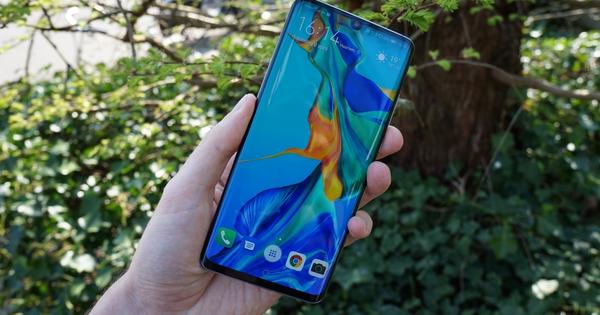If you want to edit and manage photos in a professional way, Adobe Lightroom is the right choice for you. A good program, but it costs about 140 euros per year. Waste of money, if you know that the free darktable offers similar possibilities.
Tip 01: Work environment
The open source package darktable has been around for some time for MacOS and Linux, since the end of 2017 there is also a 'native build' for Windows. Unfortunately, this Windows variant does not yet contain all the functions of the other editions, but you will soon notice that there are already more than enough options. Just like Lightroom, darktable doubles as a photo editor and manager, which can also handle all kinds of raw formats. You can find the program here (including the source code for enthusiasts).
The installation for Windows is easy via the wizard: click through a few times and you're done, there are no crazy things in the installation. If you start your darktable for the first time, then there is not much to experience for the time being: the tool mainly complains that you have not yet made any photos available. If you are bothered by the somewhat poor Dutch, you can activate the English interface: click on the gear icon in the top middle, open the tab GUI Settings and change the interface language. We stick to Dutch here. By the way, do you see that you can also change a lot of other settings for the program here? Go through those settings right away to see what you could adjust.
 Darktable is a photo editor and manager that can handle raw well
Darktable is a photo editor and manager that can handle raw well Tip 02: Manage
That message about the missing photos, we are going to do something about it. You need to import photos into the program. You will find the option in the top left for that. Not? Then you have probably already experimented and you have already stepped out of the library window. Darktable consists of three parts: library (lighttable), development (darkroom) and other (other). You go back to the library by clicking . at the top right library or use the keyboard shortcut L (from light table). With the shortcut D (from darkroom) you open the photo editing module develop.

Tip 03: Import
In the menu import you will find three options: image, folders and media. You use the latter when, for example, you have connected a camera and you want to import the photos directly to the PC. However, we assume that the photos are already somewhere on your PC or an external drive. Darktable will not find shared network folders, unless you have made a network connection (with drive letter) via Windows Explorer.
Navigate to the folder from which you want to import photos. At the bottom of this window you will find import options. Place a checkmark import folders recursively to include photos from the underlying folders as well. The option is also very useful apply metadata to import, after which you can immediately add data to the photos, including by: author enter your name and attach labels to the photo. To add multiple keywords to your photo selection, separate them with a comma, such as: trip, Corfu, summer, 2017. Confirm with Open, then the pictures will appear in the center panel.
You can now open other folders in the same way: they will automatically appear in the group fastcollections to the left.

Tip 04: Non-destructive
You can give any imported photo a star rating in darktable. You can quickly filter on this via view, so that you can easily make a selection of your best photos. For those wondering where darktable keeps that appreciation: that doesn't happen in the photo, but with the photo. Very concretely: this metadata is not stored in the photo file itself, but in a so-called sidecar file with the extension xmp (extensible metadata platform). You can see that for yourself: for every imported photo file such an xmp file has been created in the photo folder. You can also open such an xmp file to see what it contains, for example in your browser. The star rating is included herein as xmp:Rating="…”. You can also find the labels and other metadata that you added to your photos during the import here.
And even more: photo edits such as color corrections, crops, etc. also end up in this file. You edit files with darktable in a so-called non-destructive way. The actual photo files remain neatly untouched.
The changes are saved in a separate fileTip 05: Adjust exposure
On to editing your images. In the center panel, double-click a photo for which you want to adjust the exposure, for example (or select the photo and click develop or press the D button).
A histogram now pops up. Based on that, you can make the necessary adjustments. Usually this histogram is wavy from the left edge to the right edge. For example, if this does not extend to the right edge, you can adjust the photo as follows. Click the button basic editing module (below the histogram) and open the module exposure. It contains a number of sliders, including for lighting. When you move the slider here to the right, you will see that the white part of the histogram also moves to the right. Of course you want to prevent the photo from being overexposed. You can keep an eye on that by using the over and under exposure indicator clicking: the second button on the right under the photo. Overexposed areas now get a bright red color. If certain parts of the photo turn out to be bright blue, then there is underexposure. You can usually adjust that by using the slider at black point to move to the left. Click the little button reset, just above the scroll bars, to return to the original (color) state. Zooming in on the photo to get a better look at a certain part is done simply with the scroll wheel of your mouse.

Tip 06: Saturation
A photo can look a bit too faded or just too bright. You can adjust that using the module contrast brightness saturation, which you will also find in the group modules for basic operations. By the way, you can reach all modules of darktable by clicking other modules clicking: there are dozens of them!
You give the colors of your photo a deeper shade by using the slider at saturation what to move to the right. But it can also be different. When you click the slider with the right mouse button, a panel with different curves appears. You can move it by moving the mouse: the higher in the curves, the more effect the move has. You can tell by the number that appears after saturation. You can also enter that number yourself.

Tip 07: Color correction
Saturation is one way to optimize the colors of your photos, but darktable has (much) more to offer. Open the group modules to correct color and choose color correction. To adjust the colors you can now use the scroll wheel on top of the colored boxes. Once you've taken a portrait photo, you can quickly give it a natural skin tone in a more automated way. Open the color zones module and click the small button at the top left of the module Preferences. Several presets will now appear, including naturalskin colors. If all goes well, this option makes the faces look nicer – or at least more natural – instantly. By the way, it is also perfectly possible to add your own color settings to these 'presets': click on save preference, give your institution a name and confirm with OK.
You can easily apply the edit to a whole range of photosTip 08: Copy edit
Suppose you have made a series of optimizations on a photo. Now you want to apply the same adjustments to other photos as well, because you had taken several photos in a row. Then you don't have to reinvent the wheel. Select the edited photo in the library and press Ctrl+C (yes, the hard-key combination to copy something in Windows). Then select one or more other photos in the library (hold the Ctrl or Shift key for multiple selections) and press Ctrl+V. All edits are now neatly transferred to the photo selection. It can be that easy in darktable!

Tip 09: Export
As mentioned, darktable neatly keeps track of all edits in sidecar files. At some point you want to copy those optimized photos to another location or, for example, share them online. And then of course you want to see the changes in the photo files there! You can do that by exporting those photos.
Select the desired photos in the library and open the section export selection at the bottom of the right panel. Note that you can export the photos directly to Facebook and Flickr, among others, but we just choose here localfolder. Choose the right location. If you hover over the path for a moment, you'll see variables that you can include in the filename, such as $(EXIF_YEAR). You can also indicate in which format you want the export, whether you want to adjust the size of the photos and more. Once you have set everything up to your liking, confirm with the button export All the way at the bottom.
Darktable does contain a lot of other options, but with these tips you can get started. Have fun with this wonderful tool!

